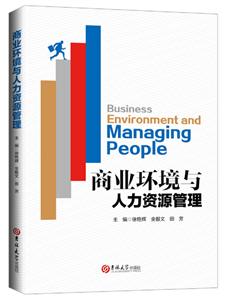
作者:徐艳辉;全毅文;田芳
页数:464
出版社:吉林大学出版社
出版日期:2019
ISBN:9787569249583
电子书格式:pdf/epub/txt
内容简介
内蒙古商贸职业学院自2007年起分别与英国桑德兰城市学院、英国南埃塞克斯学院开展联合办学项目,合作培养具有专业视角的国际化商务人才。本书根据中外合作办学项目专业人才培养目标,以国际商务环境、人才管理的基本理论为出发点,旨在把中外合作办学项目学生培养成为既具有系统的专业理论知识,又具有实际工作经验与能力、了解相关商务环境、人力资源管理知识的国际商务人才。
本书特色
本书由中外合作办学项目一线教师编写,坚持以“立足高职、服务高职,培养国际商务人才”为宗旨,具有实用性强、逻辑性强、简明扼要的特点。以商务环境、人力资源管理基本理论为出发点,既培养学生系统的专业理论知识,又注重培养学生的实际分析、解决问题的能力,为其他相关专业课的学习及未来实际工作奠定基础。
目录
Introduction to the Book ……………………………………… 002
Chapter 1 Organizations and Their Objectives ………………… 005
Chapter 2 Businesses Stakeholders …………………………… 028
Chapter 3 Responsibilities of Organizations …………………… 045
Chapter 4 Business Environment Analysis …………………… 072
Chapter 5 Market Forces ……………………………………… 093
Chapter 6 Market Structure and Competitive Forces ………… 105
Chapter 7 The International Business Environment ………… 125
Appendix ……………………………………………………… 141
Part 2 Managing People ……………………………………… 157
Section I Module Guide ……………………………………… 158
Section II Assessment ………………………………………… 161
Section III Managing People ………………………………… 178
Chapter 1 The Role of Human Resources ……………………… 180
Chapter 2 Developing and Implementing Strategic HRM Plans … 207
Chapter 3 Recruitment ………………………………………… 233
Chapter 4 Selection …………………………………………… 263
Chapter 5 Compensation and Benefits ………………………… 296
Chapter 6 Retention and Motivation …………………………… 332
Chapter 7 Training and Development ………………………… 367
Chapter 8 Employee Assessment ……………………………… 406
Chapter 9 Working with Labor Unions ………………………… 438
Bibliography …………………………………………………… 453
节选
Introduction to the Book
Description
The purpose of the book is to introduce learners to the institutions and influences which constitute the economic and broader environment in which businesses operate and to develop an understanding of how businesses adjust their behaviour to changes in the environment,both nationally and internationally.
Learners are encouraged to identify the objectives of organizations and the influence of stakeholders and to investigate the operation of organizations in relation to the local, national,and global environments.
It is expected that learners will develop an understanding of the nature and purpose of political and economic institutions, underpinned by a knowledge of how basic economic theory works in different types of economy. Learners will also be expected to develop a basic understanding of economic, social and technological forces and be able to compare China with other countries.
Teaching/ Learning Strategies
The book will be delivered through a combination of lectures, seminars, small group tutorials as well as guided self-study. A topic will be introduced via a lecture. In the days following the lecture students will be invited to undertake related research which will then be discussed, reinforced, extended and enhanced via group seminars which may be tutor or student-led. The strategy will be underpinned and formatively assessed by small group tutorials.
Chapter 1 Organizations and Their Objectives
Introduction
A great number of organizations with many different types, forms and usually with various objectives can be encountered in our lives. The business organizations we come into contact vary from huge organizations, employing thousands all over the world and with a turnover lager than some nations’ gross national product, to modest business organizations hiring only a few people and operating in a small locality.
So what is the purpose of all organizations? Why were they set up, and why some of them cannot continue and some can operate successfully? In this chapter we are going to consider the advantages and disadvantages of different forms of businesses, like sole traders,partnerships, and limited liability companies. We also identify the differences between the public and private sectors, and explain the functions of three levels of economic activities,including primary, secondary and tertiary industries.
In this chapter, we will mainly identify and discuss the mission, vision, values and various objectives of an organization. An organization should have its mission—the guiding idea behind the organization’s all activities. Vision is a kind of intention of an organization that is expected to be realized in the future. Values can be a set of principles or ideas that influence the activities of an organization. Objectives of an organization are used to fulfil the mission, which also explain the organization’s mission to a number of different client groups or stakeholders, who all have an interest in the organization’s activities.
The objectives of this chapter:
(1)The size and types of organizations
(2)The nature of the public and private sectors
(3)The three levels of economic activities
(4) Business objectives
1.1 Categories of Organizations
An organization is an arrangement of people, pursuing common goals, achieving results and standards of performance. There are many different types of organizations that are set up to serve a number of different aims and to meet a variety of needs. They come in all forms, shapes and sizes. All businesses try to achieve their goals so that they can be operated successfully.
Any business has people and resources to do one of two following things.
A. To produce or make items or goods to be sold, like shoe factory, furniture maker, jeans factory, computer maker.
B. To provide services to be sold including banks, police, hospitals and insurance. Here are some possible differences between organizations.















